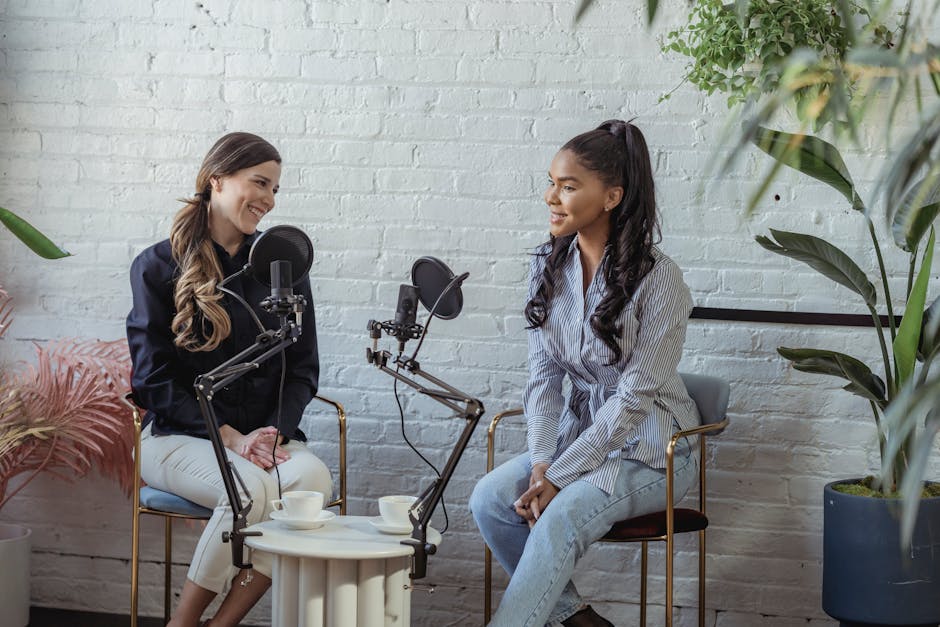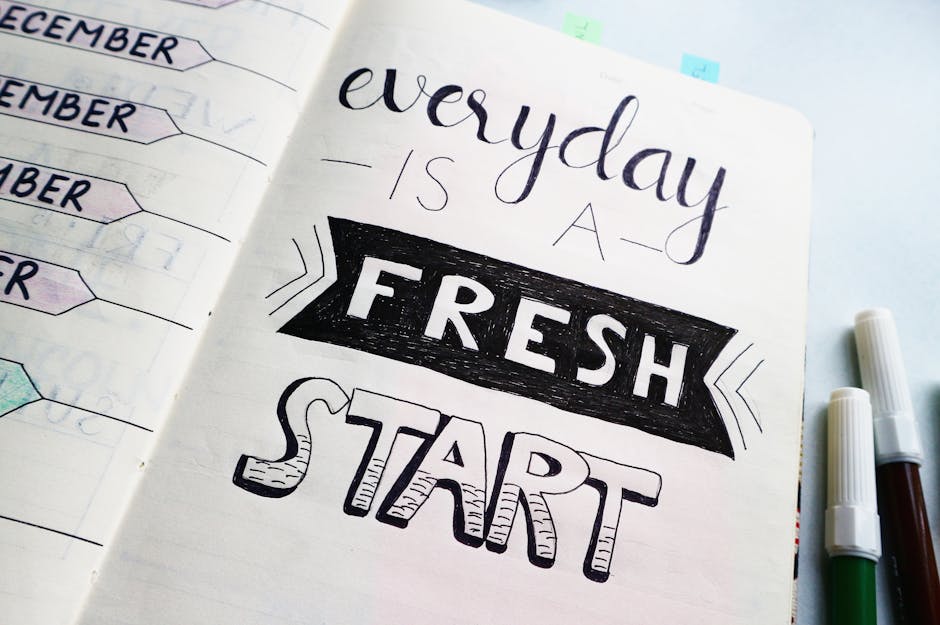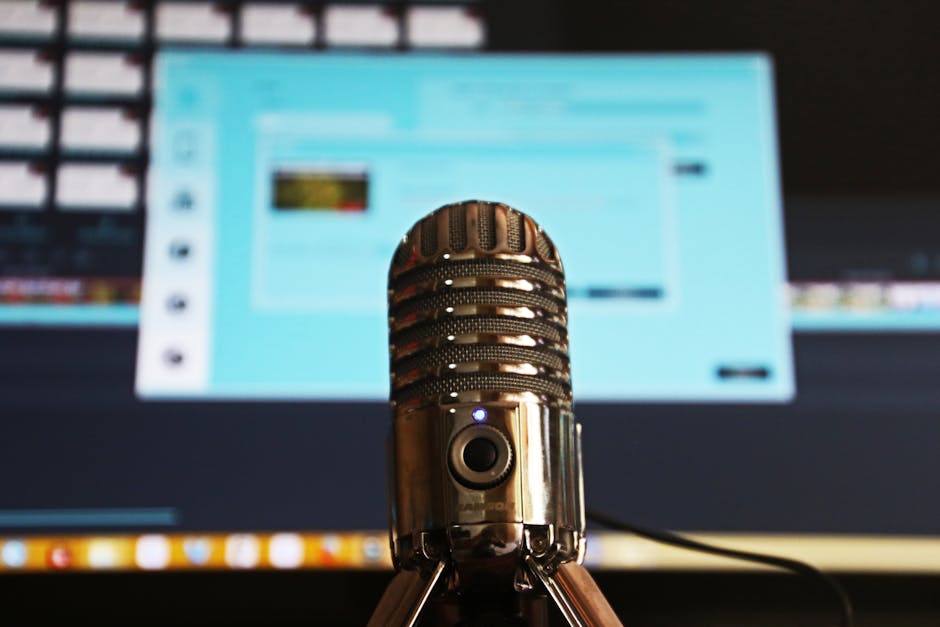How to Start a Creative Podcast
Podcasting has become an incredibly popular medium for sharing stories, ideas, and information in recent years. With over a million podcasts available to listeners, it’s clear that there is a demand for diverse and engaging content. If you have a passion for a particular topic or a unique perspective to share, starting a podcast could be the perfect creative outlet for you. In this comprehensive guide, we will walk you through the process of starting a creative podcast, from conceptualization to promotion.
The Power of Podcasting

Podcasting has rapidly evolved from a niche hobby to a mainstream form of media consumption. According to Edison Research, over 155 million people in the United States have listened to a podcast, and the number continues to grow. Podcasts offer a unique opportunity to connect with a global audience, share your expertise, and build a community around your ideas.
So, why start a podcast? Podcasting allows you to express your creativity, connect with like-minded individuals, and establish yourself as an authority in your field. Whether you’re passionate about true crime, wellness, business, or any other topic, there is an audience out there waiting to hear what you have to say.
Finding Your Niche

Before you dive into the world of podcasting, it’s essential to define your niche. What are you passionate about? What topics do you want to explore? Who is your target audience? Identifying your niche will help you create content that resonates with your listeners and sets you apart from other podcasts.
Consider what makes you unique. Do you have a particular expertise or perspective that others don’t? Think about what excites you and what you could talk about for hours on end. Your passion and enthusiasm will shine through in your podcast and attract listeners who share your interests.
Choosing Your Format

There are many different podcast formats to choose from, depending on your goals and preferences. Some popular formats include:
- Interviews: Invite guests to share their expertise and insights on a particular topic.
- Solo: Share your thoughts, stories, and experiences with your audience.
- Roundtable: Host discussions with a group of people to explore diverse perspectives.
- Narrative: Tell a compelling story with a beginning, middle, and end.
Consider what format aligns with your content and audience. Experiment with different formats to see what resonates best with your listeners.
Recording Equipment and Software

One of the great things about podcasting is that you don’t need a lot of fancy equipment to get started. However, investing in quality recording equipment can improve the sound quality of your podcast and enhance the listening experience for your audience.
Some essential tools for podcasting include:
- Microphone: A good quality microphone is essential for capturing clear and crisp audio.
- Headphones: Invest in a pair of headphones to monitor your audio while recording.
- Recording software: Use software like Audacity or GarageBand to record and edit your podcast episodes.
- Pop filter: A pop filter can help reduce plosive sounds and improve the overall quality of your recordings.
Remember, the most important thing is to focus on creating valuable content. While high-quality equipment can enhance your podcast, it’s your unique perspective and engaging storytelling that will keep listeners coming back for more.
Creating Compelling Content
Once you have your equipment set up, it’s time to start creating content for your podcast. Think about what value you can offer to your listeners. What do you want them to take away from each episode?
Some tips for creating compelling content include:
- Plan your episodes: Create an outline or script for each episode to ensure a smooth flow of content.
- Be authentic: Share your genuine thoughts and feelings with your audience to build trust and connection.
- Engage your listeners: Encourage listener interaction through Q&A sessions, polls, or guest feedback.
- Experiment with storytelling: Use narratives, anecdotes, and personal experiences to captivate your audience.
Remember to stay true to your voice and style. Your podcast is a reflection of who you are, so embrace your uniqueness and let it shine through in your content.
Editing and Post-Production
Editing is an essential part of the podcasting process. It allows you to polish your episodes, remove mistakes, and enhance the overall quality of your content. While editing can be time-consuming, it’s worth the effort to deliver a professional podcast to your listeners.
Some tips for editing and post-production include:
- Remove background noise: Use noise reduction tools to clean up your audio and improve clarity.
- Edit out mistakes: Cut out long pauses, filler words, and any other distractions that may detract from your content.
- Add music and sound effects: Enhance your podcast with music, jingles, transitions, and sound effects to create a more engaging listening experience.
Experiment with different editing techniques to find a style that works best for your podcast. Remember, editing is a skill that improves with practice, so don’t be afraid to try new things and learn from your mistakes.
Publishing and Promotion
Once you’ve recorded and edited your episodes, it’s time to publish them and promote your podcast to attract listeners. There are many platforms where you can host your podcast, such as Podbean, Anchor, or Buzzsprout. Choose a platform that aligns with your needs and goals.
Some tips for publishing and promoting your podcast include:
- Optimize your podcast title and description for search engines to improve discoverability.
- Create eye-catching cover art that reflects the tone and content of your podcast.
- Promote your podcast on social media, your website, and other channels to reach a wider audience.
- Collaborate with other podcasters, influencers, or brands to cross-promote your content and expand your reach.
Building an audience takes time and effort, so be patient and consistent in your promotion efforts. Engage with your listeners, respond to feedback, and continuously seek ways to improve your podcast.
Monetization Strategies
While podcasting is a rewarding creative outlet, it can also be a source of income if you choose to monetize your content. There are several ways to monetize your podcast, such as:
- Advertising: Partner with brands and advertisers to feature sponsored content in your episodes.
- Merchandise: Create and sell merchandise related to your podcast, such as t-shirts, mugs, or stickers.
- Membership: Offer exclusive content or perks to members who support your podcast through subscriptions or donations.
Explore different monetization strategies to find what works best for your podcast and aligns with your goals. Remember, the key to successful monetization is to provide value to your audience and maintain the integrity of your content.
Common Misconceptions
One common misconception about podcasting is that you need to have a large audience to be successful. While having a sizable audience can certainly help with monetization and visibility, the quality of your content is ultimately what will keep listeners engaged and coming back for more. Focus on creating valuable, engaging content, and the audience will follow.
Another misconception is that podcasting is a solo endeavor. While many podcasts are hosted by a single individual, collaborating with co-hosts, guests, or contributors can add diversity and depth to your content. Don’t be afraid to reach out to others in your industry or community to explore potential collaborations and expand your network.
FAQs
1. Do I need expensive equipment to start a podcast?
While investing in quality equipment can improve the sound quality of your podcast, you don’t need to break the bank to get started. Many podcasters have found success with affordable microphones and recording software.
2. How often should I release new episodes?
The frequency of your podcast episodes will depend on your content, audience, and schedule. Some podcasters release episodes weekly, bi-weekly, or even monthly. Consistency is key, so choose a schedule that works for you and stick to it.
3. How do I attract more listeners to my podcast?
Promotion is essential for attracting new listeners to your podcast. Utilize social media, email newsletters, guest appearances on other podcasts, and collaborations to reach a wider audience. Engage with your listeners, respond to feedback, and continuously seek ways to improve your content.
To Wrap Things Up
Starting a creative podcast can be a rewarding and fulfilling experience. By defining your niche, creating compelling content, and promoting your podcast effectively, you can attract a loyal audience and build a thriving community around your ideas. Remember to stay true to your voice, experiment with different formats, and continuously seek ways to improve your podcast. The journey of podcasting is a creative and exciting one, so embrace the process and enjoy the ride!




